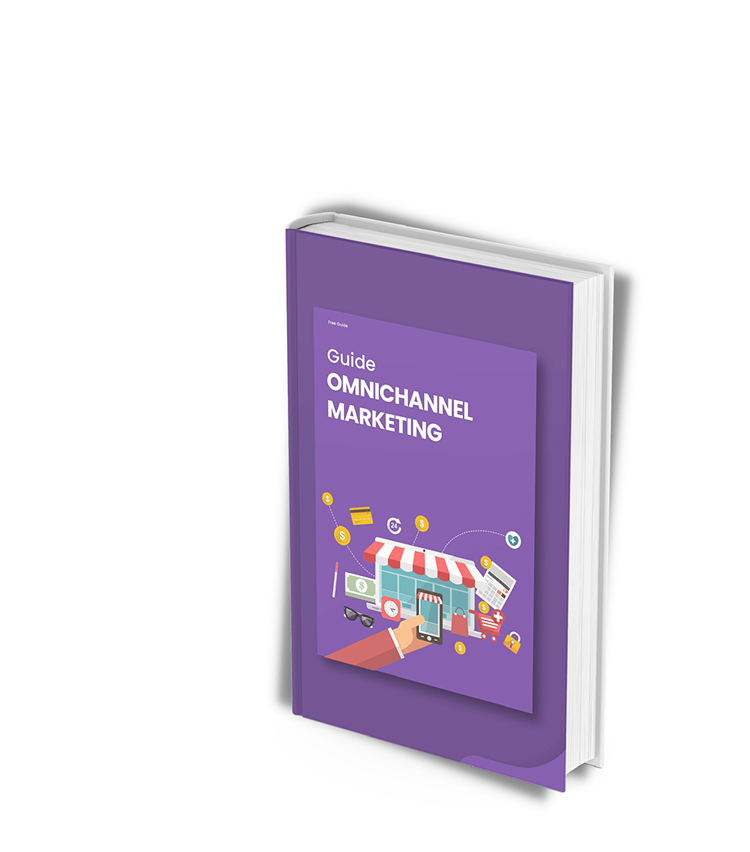How to Create an Omnichannel Marketing Strategy to Suit Your Business
Download our free guide and find out everything you need to know about creating your own omnichannel marketing strategy.


What is omnichannel marketing?
- Omnichannel marketing provides a consistent customer experience across all channels, online and off.
- This enables marketers to plan, execute, and track campaigns, ensuring every touchpoint, including social media, email, websites, and in-store interactions knit together seamlessly.
- A fully joined-up approach enables customers to move effortlessly through their journey, regardless of the platform, benefitting from a more connected brand experience.
What will you learn from our free guide?
How to create a strategy
Get all the information you need to come up with a solid omnichannel marketing strategy for your business.
Useful implementation tips
Get useful tips on what to keep in mind when implementing your strategy and how to measure your success.
How other businesses have found success
Get inspiration from three brands that have already implemented brilliant omnichannel customer experiences.
What does our Omnichannel Marketing Strategy Guide cover?

Step 1: Shift Your Focus to the Customer
When developing a long-term omnichannel strategy, the first step is to examine the focus of your organizational structure. If this has been centered around your company or brand, it’s now time to put the spotlight on the customer.
Step 2: Collect Customer Data Centrally and Use it Correctly
Gather data to find out everything you need to know about your audience so you can optimize their customer experience and use social listening tools to discover even more about them.
Step 3: Plan the Ideal Customer Experience
Once you know how your target market ticks and how they use your various channels, you have the information you need to put together the optimum customer experience plan using segmentation and personalization. The guide explains how and why.
Step 4: Put Together Your Perfect Marketing Tech Stack
Your marketing tech stack needs to be as individual as your ideal customer experience. You probably already use several tools, but you now need to add additional software to the mix. The challenge is working out which of the many available options will work best for you.
Step 5: Keep Testing and Optimizing
Start a process of ongoing testing and refinement using A/B testing. Vary the length of your texts to work out if shorter or longer pieces work best. Find the perfect formula for email subjects to improve the open rate. The guide will take you through all the options.
Book a Demo of our Marketing Planning Software
Get a free demo and see Marmind Marketing Management Software in action. Pick a day that suits you best to discover available time slots.
Would you like to speak to someone before booking your demo? Get in touch with Paul and he’ll be more than happy to answer all your questions.
FAQs
What is the difference between multichannel and omnichannel marketing?
The key difference between multichannel and omnichannel marketing lies in integration and customer experience. Multichannel marketing uses multiple platforms—such as social media, email, and in-store—to reach customers, but these channels often fail to connect the dots. Omnichannel marketing, on the other hand, integrates all channels to create a seamless experience. Every touchpoint is connected, so a customer’s online browsing influences the personalized offers you deliver to them in-store or via email. Omnichannel focuses on bringing everything together for the customer, while multichannel simply multiplies the points of contact.
What are good branding and omnichannel marketing examples?
A great example of omnichannel marketing is a retail brand connecting its online and offline experiences. Let’s imagine a customer browsing through a clothing retailer’s app, where they add items to their cart but don’t, for whatever reason, get around to checking them out. Later, they receive a personalized email offering a discount on the items in their basket. They visit the physical store, where staff can access their online cart and help them make the purchase at the discounted price. Some time afterwards, the brand sends a follow-up SMS with styling tips for the purchased items. This seamless integration of app, email, in-store, and SMS channels ensures a tailored customer journey and a sky-high level of engagement and satisfaction.
How can branding and omnichannel marketing software help my business?
Branding and omnichannel marketing software centralizes your marketing efforts, improving customer engagement, and creating a seamless customer journey. These tools ensure consistent branding across all channels while integrating data to provide a unified view of customer interactions. This enables personalized marketing campaigns tailored to customer preferences which are likley to lead to enhanced loyalty and conversions.
